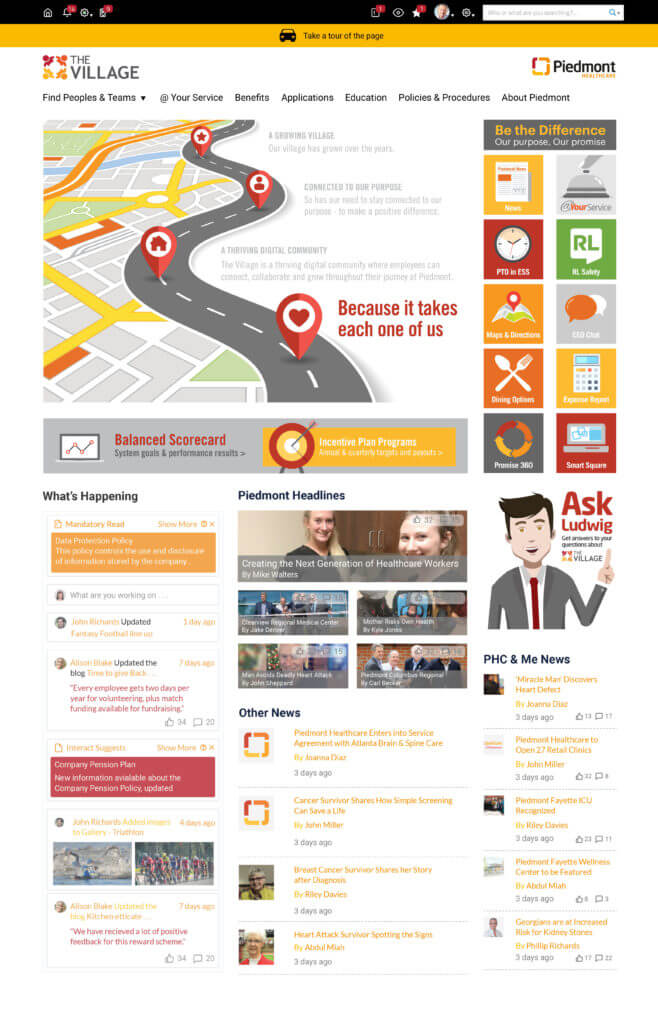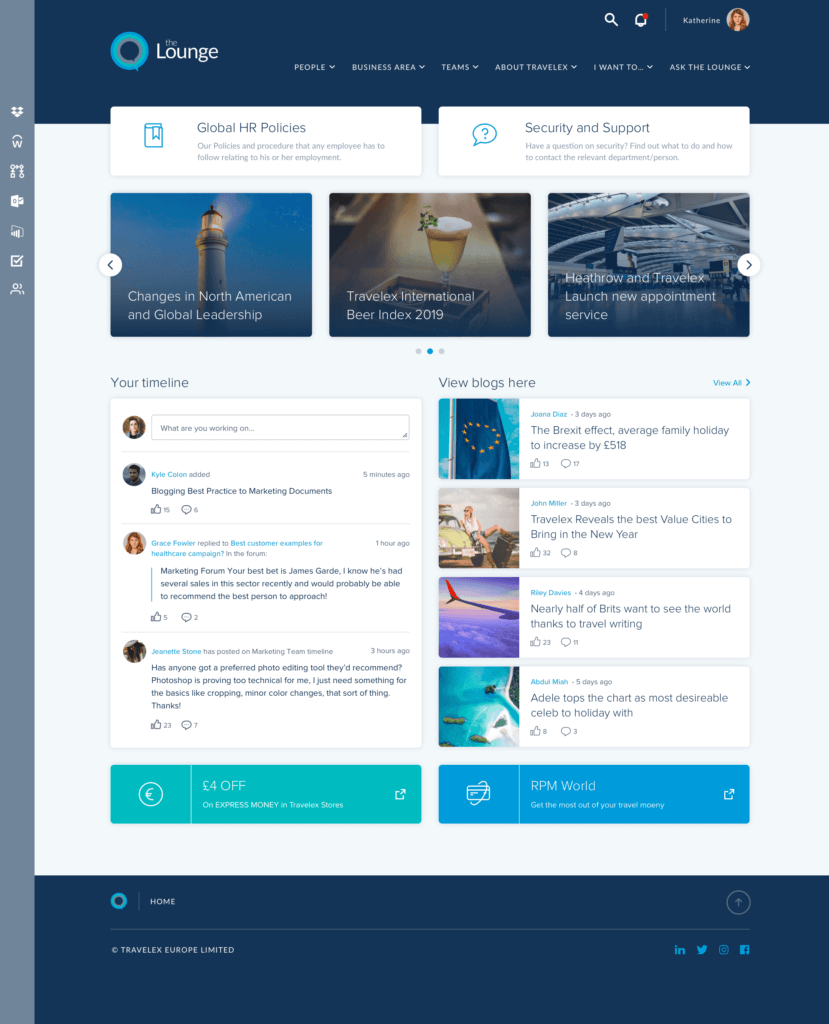What’s the difference when it comes to intranet vs internet? These quasi-homophones shouldn’t cause confusion, but even in 2023 many people are still unsure of the similarities and differences. If so, this article has everything you need to know.
If you’re reading this, you already know what the internet is; a global computer network of information, communication, collaboration, and a lot of cat videos and memes.
4.9 billion people across the globe are connected to the internet, using it to help them with all aspects of their lives, from connecting with friends to keeping up to date with news, and from tracking their health to working more effectively. Although intranets are also used by organizations globally (from schools to businesses and even countries), not everyone has an intranet definition. That leads them to ask ‘what is an intranet?’ and what is the difference between the internet and an intranet.
FREE DOWNLOAD – Comprehensive guide to intranets
What is the difference between the internet and an intranet?
The main difference in the internet vs intranet split is that an intranet is a closed, private network. The internet on the other hand is a public network available to everyone with a connection.
In short, the internet is for all but an intranet is for a select group of people, such as company employees or charity volunteers.
The internet
The worldwide system of computer networks allows the access and exchange of other computers’ information, enabling an array of services that cover communication, entertainment, and news.
Data from 2023 suggests that 62% of the world’s population – nearly five billion people – are active internet users.
From entertainment to finance, to learning and innovating, the internet underpins every area of our lives. With the Internet of Things, the applications are endless (and in some cases, risible). You can heat your home, power a driverless car, even help you eliminate noisy slurps while eating ramen – all with the help of a WiFi connection.
An intranet
An intranet, on the other hand, is primarily aligned with helping employees within a business or other organization to accomplish tasks and stay connected.
Although there are some differences when it comes to the internet vs an intranet, they are very similar. An intranet is still a computer network that shares information to remote users, but the advantage of an intranet over the internet for businesses is that it operates strictly within a closed network.
This is beneficial for organizations who want to submit and exchange company information privately. After all, most companies won’t want to share all their internal communications, policy documents, and other content with the world.
So, an intranet is a restricted version of the internet that offers greater security because it doesn’t allow access to anyone outside its network. These networks are chosen by the organization itself and typically include employees, volunteers, contractors, and franchisees. In some cases, an organization will also want to share information with commercial partners, investors, and shareholders. The use of ‘public pages’ and extranets can help to accomplish this by giving access to some intranet content, but not all.
Intranet vs internet…vs extranet?
We’ve introduced another term there, so before we go on, what is an extranet?
An extranet is an intermediary point between an intranet and the internet. Although it is still a secure, private network, an extranet gives controlled access to authorized external users to a company intranet.
So, an extranet carries the concept of an intranet but takes it outside of its normal parameters. This platform is more open, and allows third parties in, like vendors and partners. They can either have full access to the intranet, or a selected part of it.
Extranets can sit on existing intranet software or be completely independent. The primary purposes are to aid collaboration, communication, and insight for the most important people outside of your business.
You may use an extranet for:
- Customer relationship management (CRM): Extranets may provide customers with access to information about their accounts, orders, and other customer-related data.
- Supply chain management (SCM): Extranet pages offer key suppliers access to information about your inventory, schedules, and other data.
- Project management: For company projects involving external personnel, extranets can show project plans, documents, and other project-related data without having to constantly send emails or update documents in a DMS.
How do companies use an intranet?
Although the history of the intranet as a digital system began in the 1990s, an intranet is really an extension of the information architectures that companies have.
Communication, shared knowledge, training, and policies have always existed within files and folders — it’s just that those things now live on cloud-based intranet networks too.
Their introduction into the working environment in the mid-nineties saw intranets act as simple storage systems for files, information, and top-down communication.
Now, however, intranets are the hub of a business. They facilitate communication, culture, knowledge-sharing, collaboration, and more. In fact, the reason why they’re still relevant (and the intranet market is expected to grow by $15 billion by 2026) is because as work grows more dispersed, workers are keen to have online tools that support them to connect with others and to do their work effectively.
Three examples of intranet use cases include:
Automation of routine tasks
From reserving meeting rooms to booking vacations, every organization has necessary tasks that a corporate intranet can help to automate. Whether it’s through the publication of FAQs or the integration of ticket-based submission systems, the intranet can ease these often manual jobs.
Creating a shareable knowledge base
Fortune 500 companies lose approximately $31.5 billion per year when internal personnel don’t share knowledge. Our customers use their intranet platforms to create easily updated knowledge bases that everyone in the organization has access to, which supports everything from onboarding to customer service.
Developing an enterprise hub
Work no longer takes place solely in the locations it used to. Organizations are more dispersed, and communicating with staff is no longer as easy as posting a message on a physical noticeboard or calling everyone together for a meeting. Large enterprises, especially in industrial, healthcare, retail, or manufacturing settings, also have frontline staff operating in a variety of locations.
This mix of work arrangements is necessary, and can be beneficial, but it also has an impact on company culture and communication. In the same way that a public website on the internet draws people together and creates a community, a branded, customized intranet with lots of interesting content can be the center of a digital workplace and its people.
Why use an intranet vs the internet?
For most businesses, an intranet is, without a doubt, a significant investment. But there are numerous benefits of an intranet over the internet for those who do invest in a system designed to support their company.
In order to function as a business, there needs to be a way of sharing news and knowledge and creating one source of truth in a secure environment.
Organizations, particularly larger ones, need a private platform to connect and unite all their personnel, and intranet software can be shaped and modified to allow this, whether it’s one office block in a city, or a global brand with hundreds of locations across the world.
Having this internal site can also:
- Increase productivity by giving people instant access to internal content
- Cut down on admin by automating information and tasks
- Create operational cost savings through digitization of content
- Reduce errors through the provision of relevant, up-to-date information
- Encourage collaboration globally
- Enable crisis communication when it’s needed
FREE DOWNLOAD – Comprehensive guide to intranets
Intranet examples
In addition to other similarities between the internet and an intranet (such as the use of TCP/IP protocol and the use of web browsers and mobile employee communication apps to display information), the best intranet designs also now resemble consumer-grade webpages.
These intranet examples show how homepages offer a similar user experience but also allow staff to accomplish goals and receive communications.


Summary: Internet vs intranet resolved
In conclusion, though they are related, it’s important to remember that there are critical characteristics of intranet software that set it apart from the internet and extranets:
Intranets are a closed network: Within the internet, intranets are like private islands where businesses can congregate.
Corporate intranets are designed to solve a specific set of problems: The whole purpose of an intranet is to remedy existing issues in a business, namely data storage, knowledge sharing, and the distribution of information.
Intranets are smaller and more secure: Like a mini-internet, intranets are solely for the use of a business and act as a secure way to help organizations function. However, despite the differences between an intranet and the internet, they do have one thing in common: a business operates far better with both.



